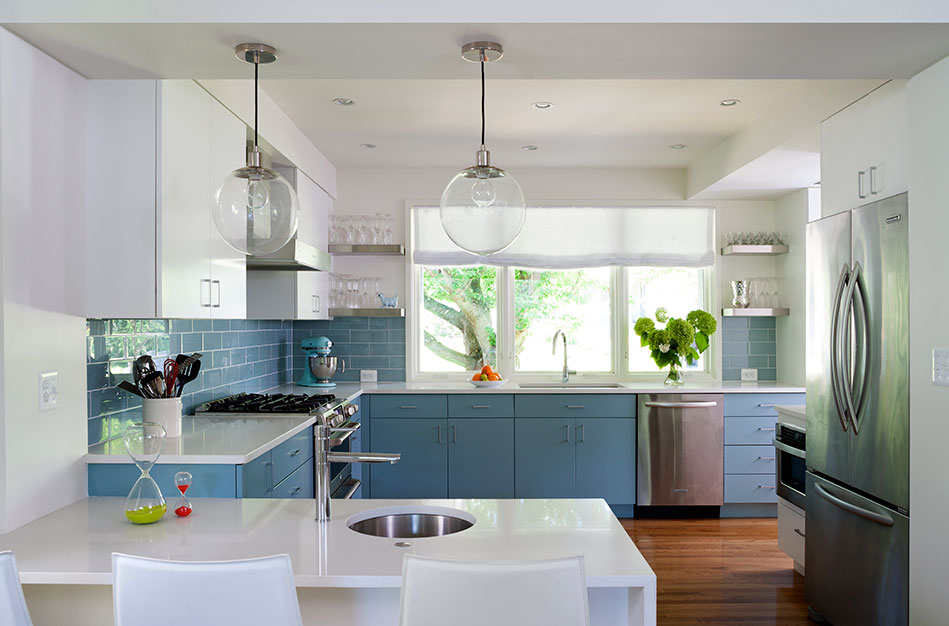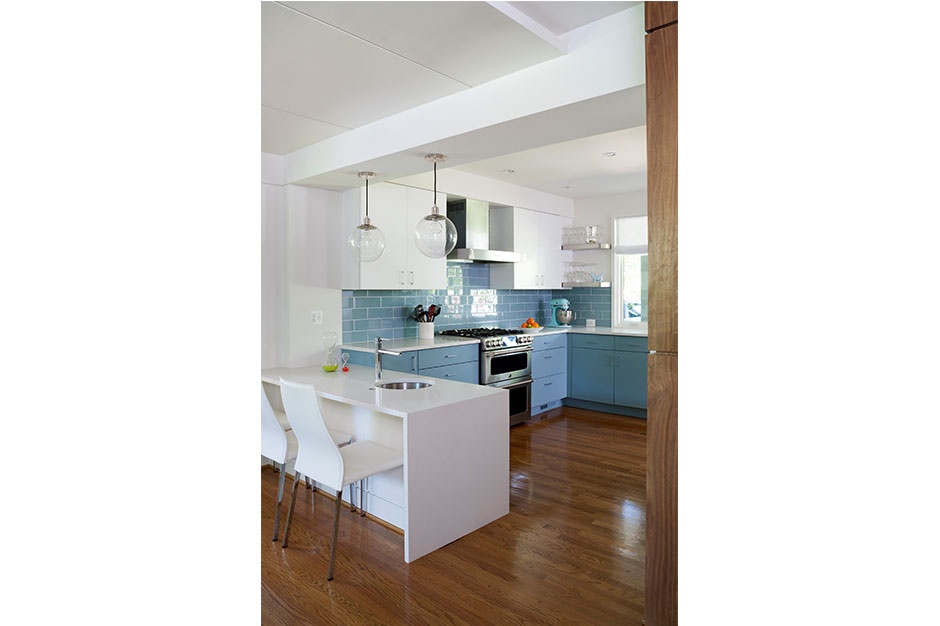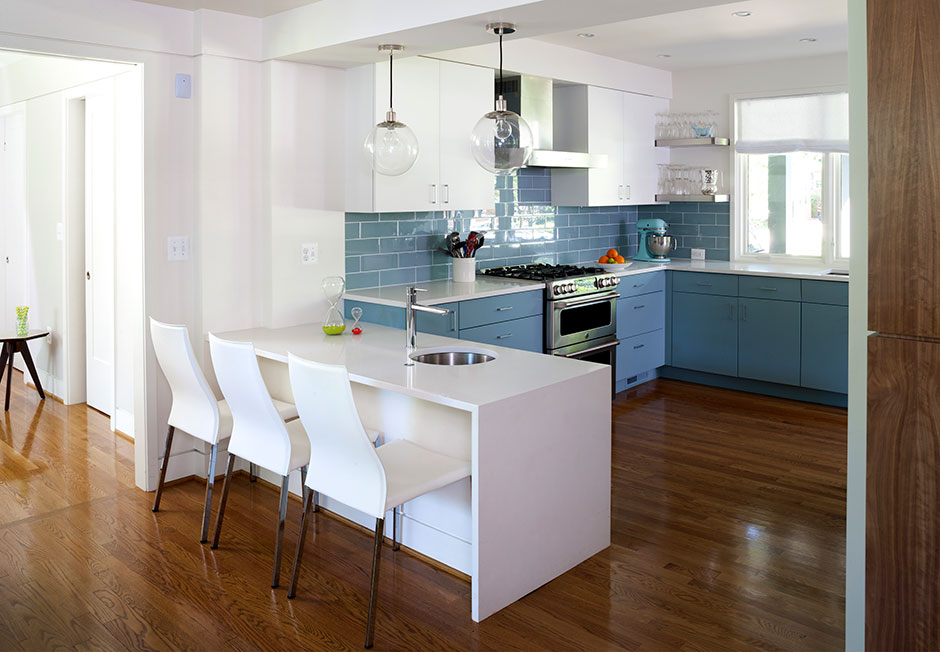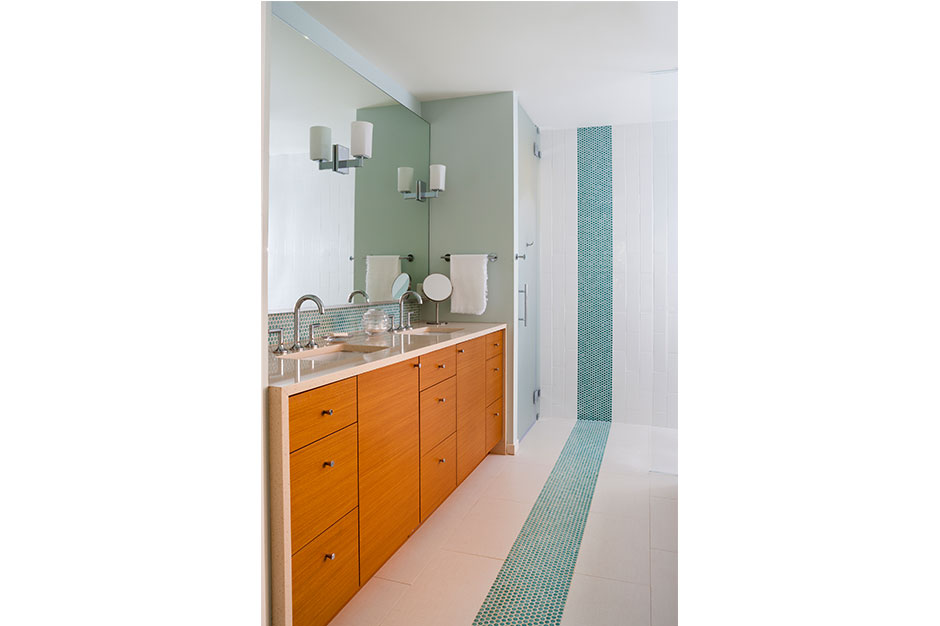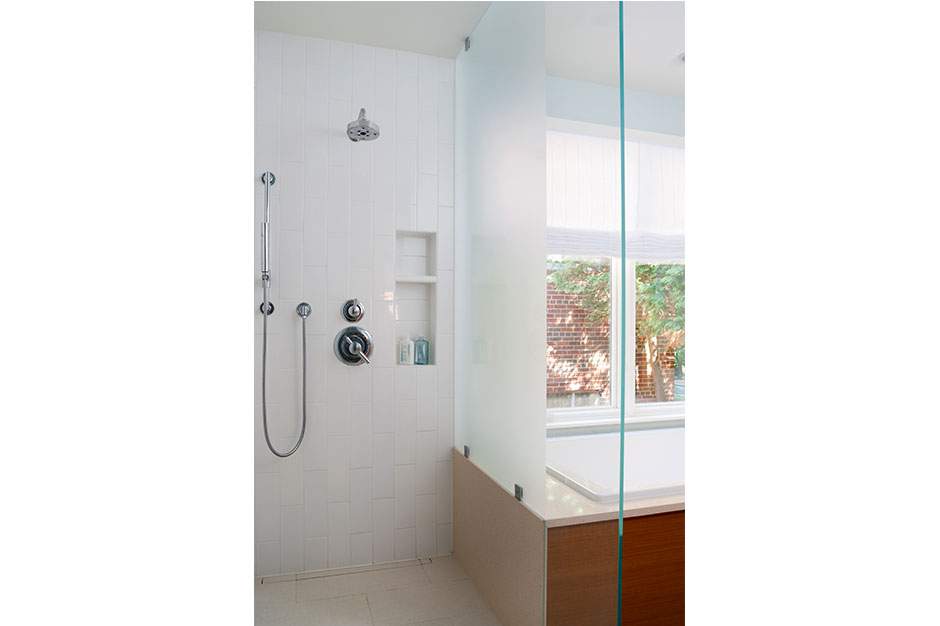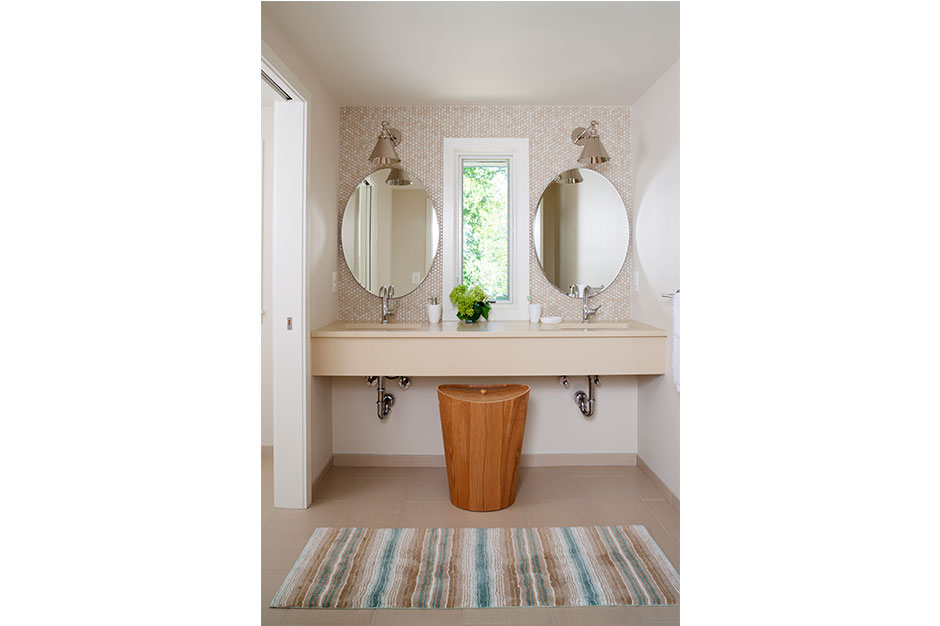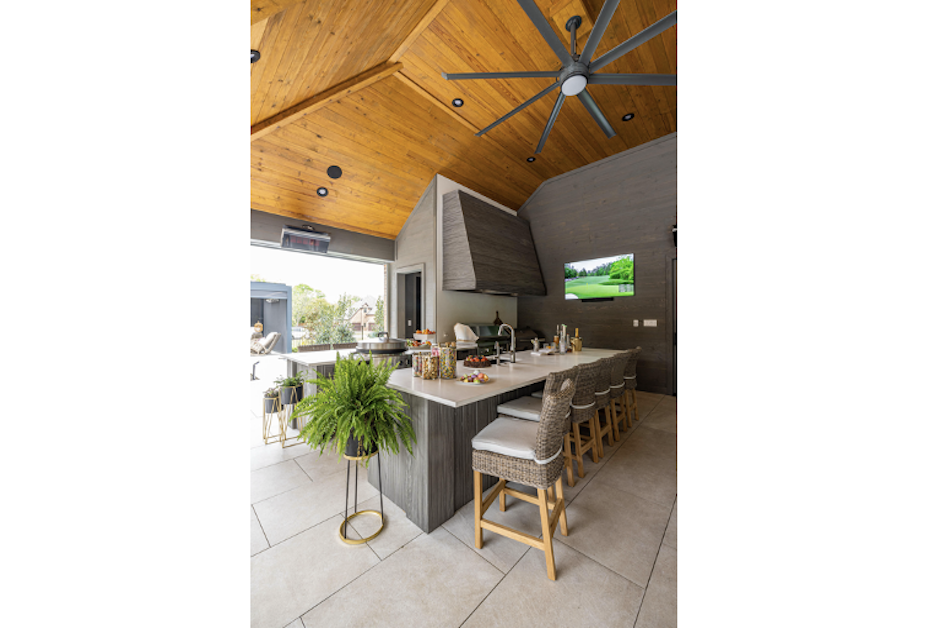December 3, 2018
Universal design is no longer applicable to just the disabled and elderly; the concept can make everyone of all ages and abilities more comfortable at home. For one family, an accessible home meant not only that their youngest child would be able to move around freely, but that the busy household could accommodate many guests of all ages and abilities.
Choosing a Mid-Century Home
Designer Christie Leu of Chevy Chase, Md.-based Christie Leu Interiors was invited to join the architectural team of Washington, D.C.-based Hamilton Snowber Architects in the transformation of a 1950s-dated home into a wheelchair-friendly, modern house. The homeowners are active in the community and have two girls and one boy, who was born with spina bifida.
“He energetically maneuvers everywhere in his wheelchair,” said Leu, describing the youngest child and his physical disability. “At three years old, this big personality went to D.C. to lobby for access to wheelchairs for children like him. Stop in at any time – you will find this open house filled with children and friends.”
Her clients chose this particular home because it had a horizontal floor plan, main-floor bedrooms and a fairly flat lot, plus there was no steep incline into the home – all important for wheelchair accessibility. The house also had space to introduce an elevator without drastically changing the floor plan. However, this home was built in the 1950s and had not been updated since then.
“This was not a “Mad Men” stylishly maintained version of a 1950s home,” said the designer. “Navigating our way around the layout, plan and size of the kitchen to accommodate for the clients’ lifestyle was a challenge that we were able to overcome only through strategic design.”
Designing a Family-Friendly Kitchen
Hamilton Snowber Architects worked with Leu on the floor plan strategy, which was inspired by the home’s original 1950s style. To create the characteristic great room feel, they first opened the wall between the kitchen and dining room.
“Without walls, it is easy for a wheelchair to move, and it adds a wonderful flow within the house,” said Leu.
Using ArchiCAD Software for construction and 3D renderings, the team created floor and counter space for everyone in the family plus their guests. Instead of an island, they included a lowered, 30-in.-high peninsula with a sink; this way the youngest child can easily wash his hands and participate in cooking activities from his wheelchair.
“The table-height peninsula gives the room seating and an interesting variety of heights that conventional kitchens don’t have,” said Leu, also adding that the lack of an island provides more floor space for more guests.
In addition to the lowered peninsula, there is a microwave drawer for the youngest child to use. The dual oven also has a toaster oven feature, which keeps the countertop clear of an extra countertop appliance and allows for the better accessibility.
The new kitchen nods to mid-century modern design through its slab cabinet doors and minimal cabinet pulls. For a cheery, family-friendly palette, the white walls, ceiling, upper cabinets and countertops are contrasted by light blue lower cabinetry and a matching subway tile backsplash. Two transparent globe pendants above the island complete the light and airy space.
Room to Grow
One of the biggest challenges of this design was considering how the wheelchair-bound child would need to move as he grew up. This was considered not only in his bathroom, but in all three bathrooms in the home.
“Since everything was being reworked anyway, it wasn’t hard to design all the baths for universal accessibility,” said Leu, adding that she wanted the child to feel like there was nowhere he couldn’t go in his home. “An accessible bathroom is very aesthetically pleasing, with a large open area for wheelchair turning and no threshold barrier at the shower. There really is no downside if you have the room.”
In the master bath, Leu chose a simple subway and field tile that was contrasted by blue penny tiles running across the floor and up the wall. A teak wood vanity nods to mid-century modern design and adds an element of warmth to the space.
The girls’ bathroom boasts a wall-hung double vanity with hints of pink everywhere – including the painted vanity itself, the walls and the mosaic tile backsplash. The shower’s curbless design is also lined with white subway tile and includes a linear drain.
In the boy’s bath, Leu used larger-format ceramic tiles on the floor and shower walls for ease of cleaning and a streamlined look. There are decorative glass mosaic tiles on the back of a square shower niche, and the palette includes soothing grays and blues. Every bath in the house additionally has a handheld shower mounted on an adjustable bar.
To make bathing easier for the youngest, a wall-mounted remote was installed outside his particular shower so the boy could make adjustments to temperature and pressure before entering. There is also a wall-mounted sink that can be raised when he grows taller.
“All our plans were designed so that he could be completely self-sufficient and an equal participant in his family and home,” said Leu, adding that her clients were impressed with how many guests can visit comfortably. “A well-designed house can facilitate a happy family life.”
Source List
Designer: Christie Leu
Architect: Hamilton Snowber Architects
Photographer: Stacy Zarin Goldberg
Kitchen
Cabinets: Greenfield
Countertops: Caesarstone
Dishwasher, Fridge & Range: GE
Faucets: Delta
Hood: Best
Microwave: Sharp
Pendant Lights: West Elm
Master Bath
Accent Tile: Architectural Ceramics
Countertop: Caesarstone
Faucet: Mansfield
Floor Tile: Mosaic Tile
Shower Wall Tile: Daltile
Sinks: Mansfield
Slide Bar with Handshower: Brizo
Toilet & Tub: KOHLER
Girls’ Bath
Accent Tile: Architectural Ceramics
Floor Tile: Happy Floors
Shower Wall Tile: Daltile
Sink: Mansfield
Sink Hardware: Moen
Slide Bar with Handshower: Moen
Toilet: KOHLER
